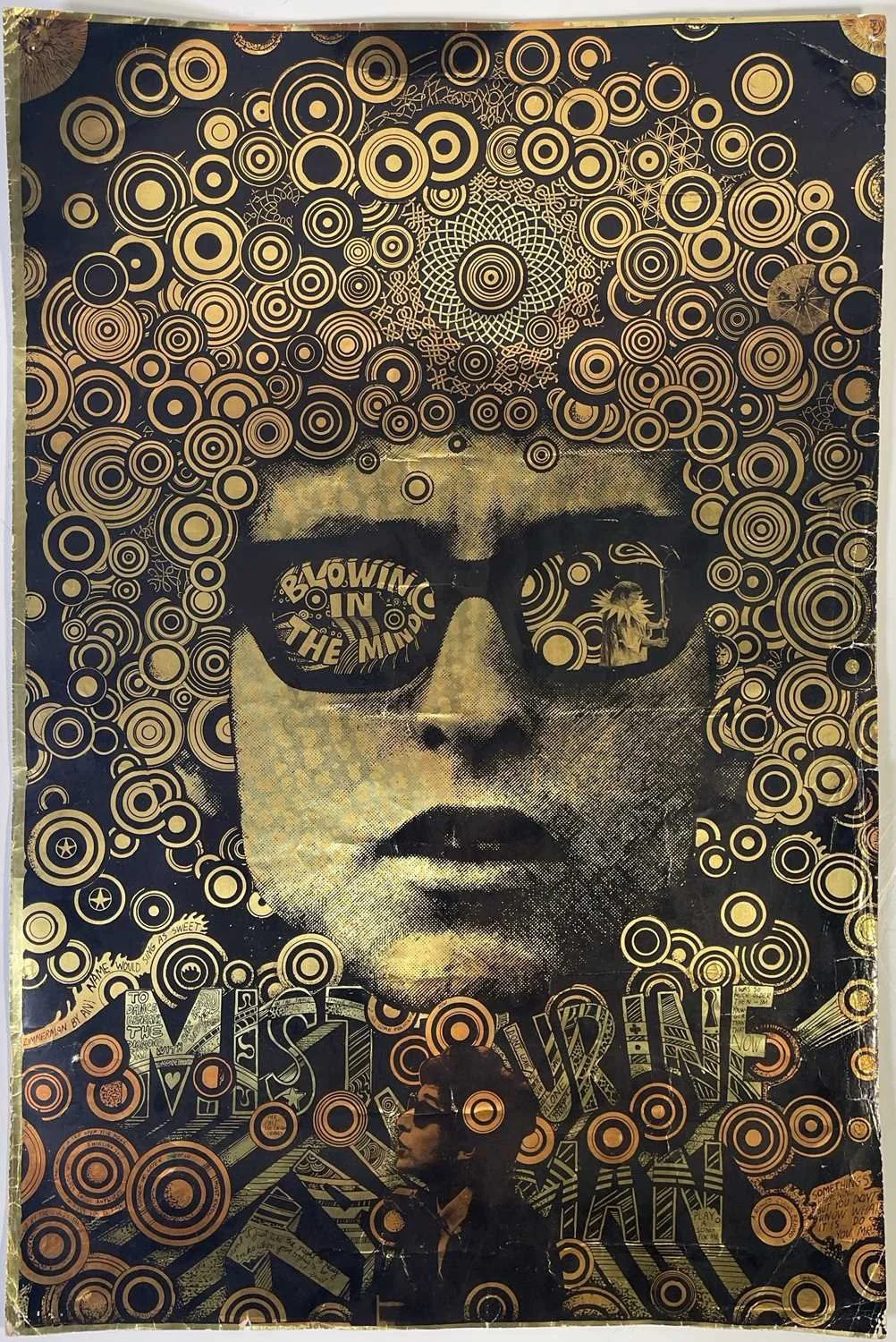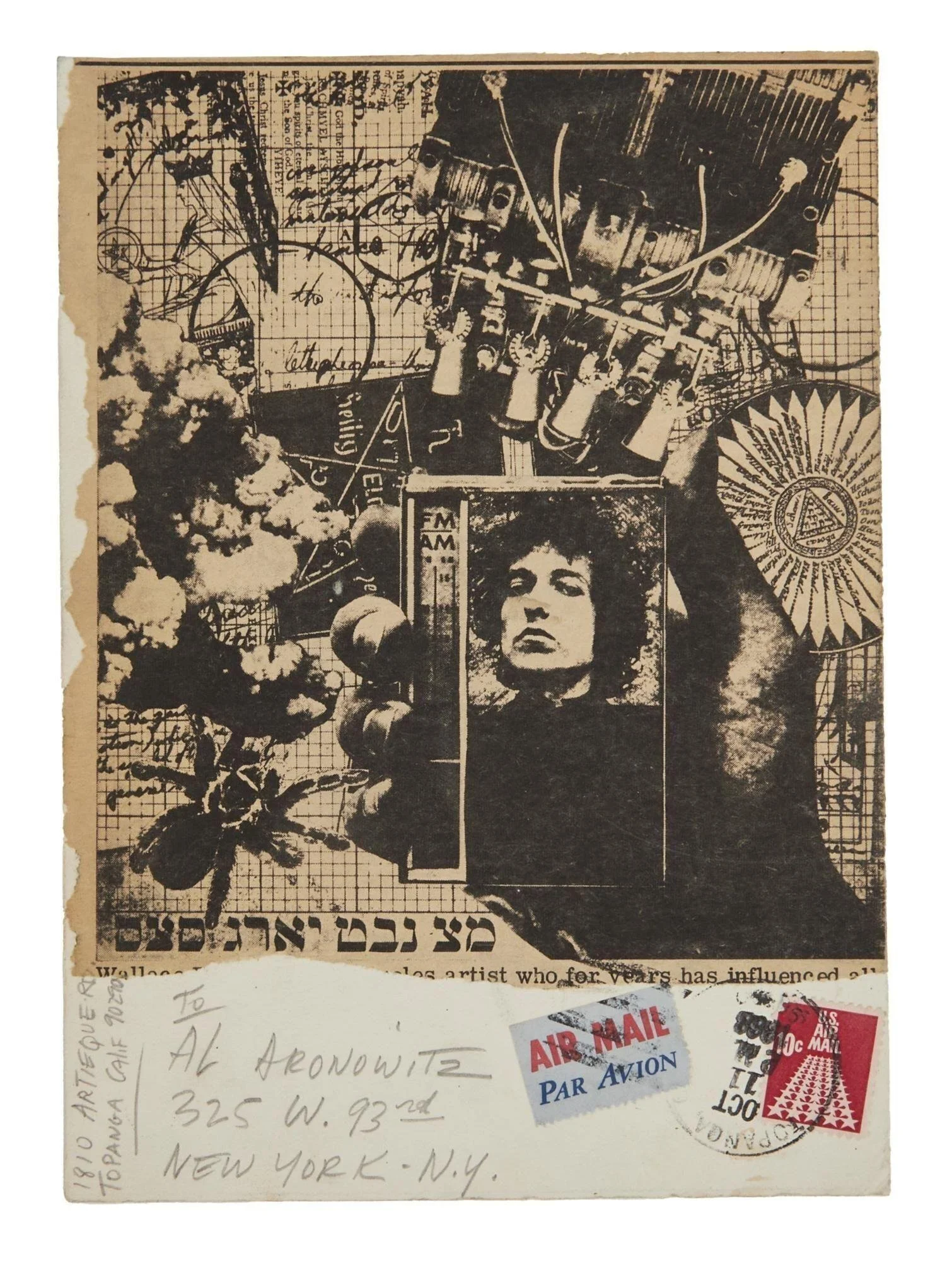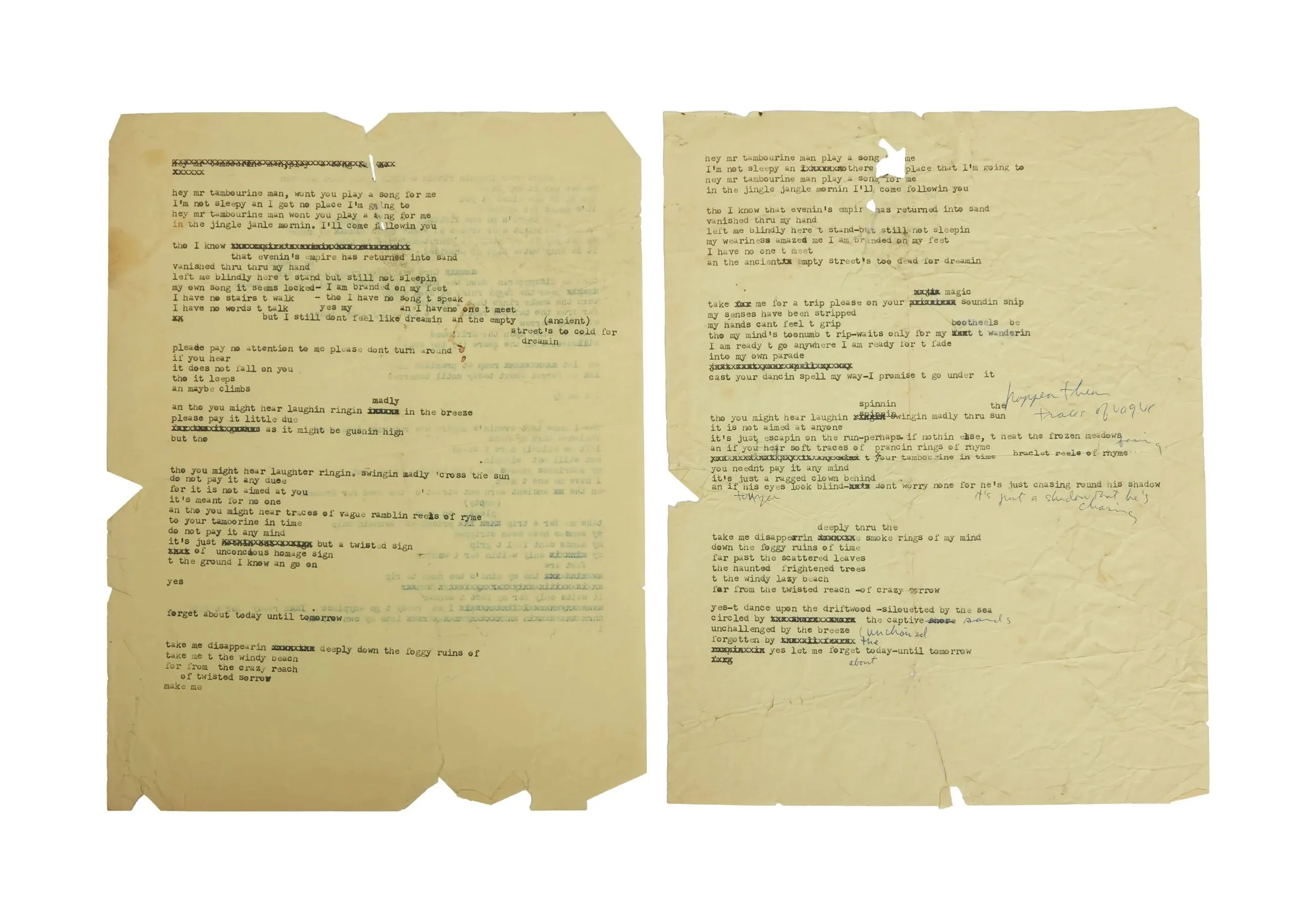
Bringing It All Back Home: Dylans Creative Sanctuary Hits the Market
Images Courtesy of William Pitt Sotheby’s International Realty
Once the stage for an era-defining album cover and a crucible of 1960s creativity, the Grossman estate invites a new chapter — for those who understand what it means to live among ghosts, gardens, and guitars.

Living room with fireplace, armchairs, glass coffee table, and floral centerpiece.

A black metal bench with two patterned cushions, a large potted fern in an ornate yellow and brown vase, and a window with dark green shutters on a stone wall exterior.
It’s one of the most quietly iconic living rooms in American cultural history.
There is a photograph: a man sits cross-legged on the floor, dressed in velvet. Behind him, a woman reclines on a chaise in a fire-red gown. The room around them is scattered with records, books, the casual chaos of mid-century counterculture. The man is Bob Dylan. The woman is Sally Grossman. The year is 1965.
Photographed by Daniel Kramer, the image became the cover of Bringing It All Back Home, and a kind of shrine to a moment when folk and rock music cracked open to let something stranger in.
Now, that same living room, and the historic home it belongs to, is for sale.
Nestled on 72 wooded acres in Woodstock, New York, the estate is asking $4.9 million through Zoopla, its listing pitched as a rare chance to own a working piece of music and design history. But this is more than just a house with a famous photo to its name. It’s a thoughtfully laid out compound that once formed the nucleus of a creative revolution. And it’s built, quite literally, for people who make things.
Albert Grossman, the formidable impresario who managed Bob Dylan, Janis Joplin, The Band, and others, bought the main house in the early ’60s and gradually expanded the property into what was then called Bearsville. Unlike other celebrity getaways, Grossman’s vision wasn’t about privacy for its own sake — it was about creating a self-contained cultural ecosystem: studios, salons, spaces to argue, drink, experiment. He called it “a place for artists to do their work,” and it became a proving ground for the collisions of folk, blues, rock and poetry that defined the era.

A cozy hallway with wooden accents, two arched windows, a small cabinet, a table with a lamp, and a pink patterned rug

A decorative shelf holding a wooden statue of a figure in robes and a lit candle, with a vinyl record of Bob Dylan's "Bringing It All Back Home" leaning against the wall.
Dylan spent significant time there in late 1964 and early 1965, writing, reading, and evolving his voice toward something more surreal, political, and personal. While the recordings for that album took place in New York City, many of the lyrics and ideas were developed in at Grossman house in Woodstock — a retreat for Dylan from touring and press attention. It was here that he was introduced to Beat writers, French symbolist poets, and the sounds that would fuel the turn from folk-protest to electric dissonance.
Much of that architectural spirit remains. The four-bedroom bluestone house, built in 1914, retains its wide-plank floors, brick and stone hearths, and the precise angles of Arts & Crafts logic.
There’s a four-bedroom guest house for collaborators and hangers-on, and a separate lodge known as Viking Hall — a spa-like studio with cathedral beams, a soaking tub, and a sauna, purpose-built for retreat and renewal. There’s also a rustic one-bedroom apartment that once housed the Bearsville Records office.
This was not just a home; it was a destination. Bob Dylan stayed there. George Harrison stayed here. So did Johnny Cash. So, improbably, did Björk.
The home’s current owners, who purchased the estate in 2014, have preserved its patina while quietly upgrading key systems — a heated saltwater pool was added, along with greenhouse gardens and smart modern comforts.

A cozy wooden sunroom with floor-to-ceiling windows, a purple sofa with pillows, a small white desk with a chair and desk lamp, and a door leading to a balcony overlooking trees.

A cozy living room with exposed brick walls, wooden ceiling beams, a leather couch with pillows, a white armchair, a wooden coffee table with magazines, a fireplace, large windows with plants, and a wooden staircase leading to an upper level.

Living room with a dining table and four chairs, fireplace, built-in shelves with decorative objects, large windows, angled ceiling, and ornate white molding and trim.

Cozy living room with white wood paneled walls, large window, gray sectional sofa with colorful pillows, round wicker coffee table, multicolored geometric area rug, and open shelves with decorative items and books on the left. A ceiling light fixture and a spherical floor lamp provide lighting. Adjacent to the living room are two doorways leading to different rooms, with framed artwork on the wall.
For all its nostalgia, the property also poses a modern question: what does a creative sanctuary look like now? With residencies, hybrid production hubs, and artist-run spaces on the rise, the Grossman compound feels both time-capsule and prototype. This house does not answer that question. But it suggests, gently, that it is still possible. This is still a place you could write something meaningful in.
As the real estate market increasingly wraps itself in story — faux-rustic, faux-historic, faux-bohemian — here’s one with actual provenance. A house that was part of the album cover and the album. A space that, even now, might call something brave and strange into being.

"This was not a place to perform art.
It was a place to live it."
Images Courtesy of William Pitt Sotheby’s International Realty
-

Martin Sharp
1967 poster designed by Martin Sharp, 'Blowin' In The Mind'. 50.6 x 76cm
Estimate £200-300.00
-

Bob Dylan
Man On A Bridge, from The Drawn Blank Series (2016) Signed in pencil, numbered from the edition of 295
Sold £800.00
-

Wallace Berman
An original piece of mail art by Wallace Berman (1926-1976) featuring a featuring an image of Bob Dylan
Sold $4550.00
-

Bob Dylan
Original Oil On Canvas Painting, signed and dated in lower left in pen, Bob Dylan August 1st, 1968
Sold $260,000.00
-

Daniel Kramer
16 x 20 print of Bob Dylan and Sally Grossman at Woodstock, New York, in 1965, signed by Daniel Kramer
Sold $4028.00
-

Bob Dylan
Three drafts of Mr Tambourine Man, lead track on the acoustic side of Dylan's March 1965 album Bringing It All Back Home.
Sold $508,000
